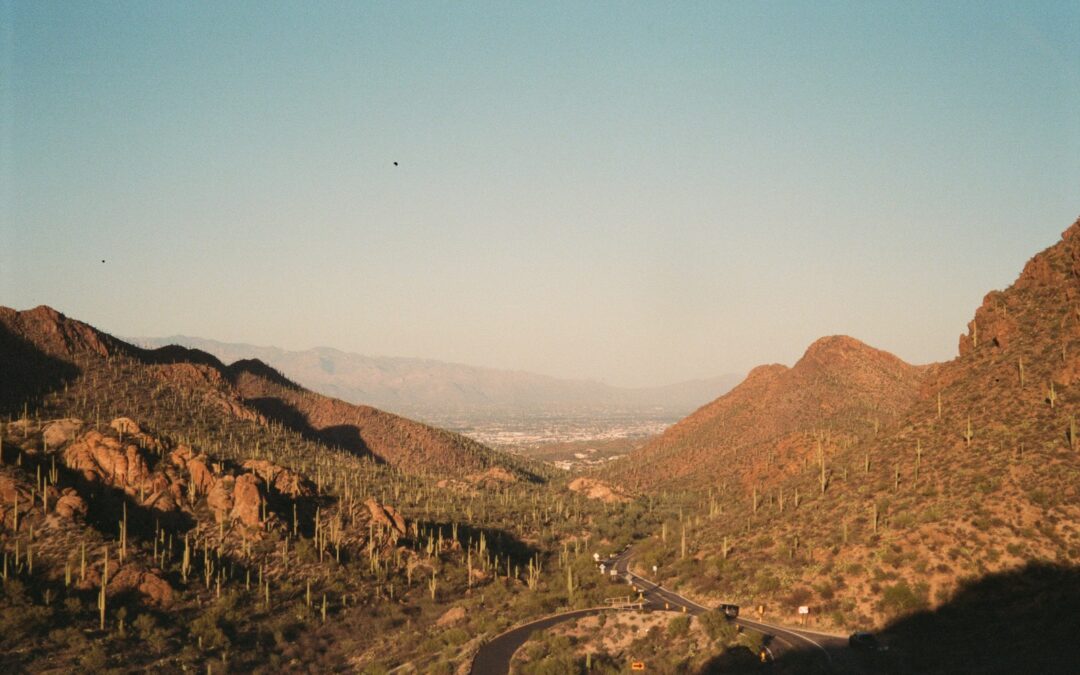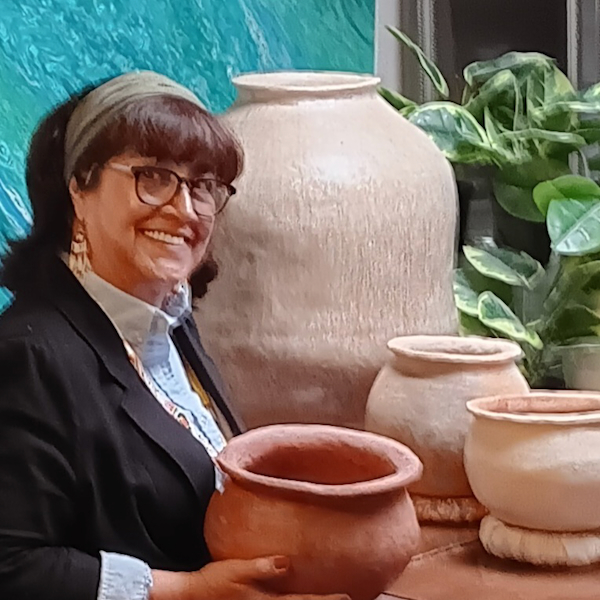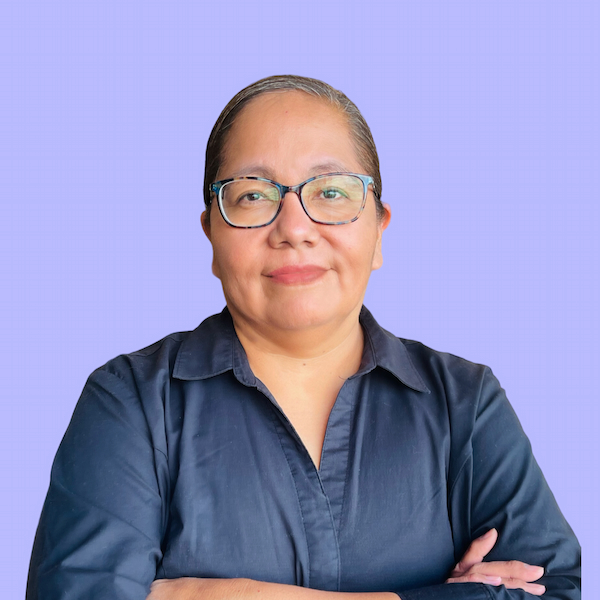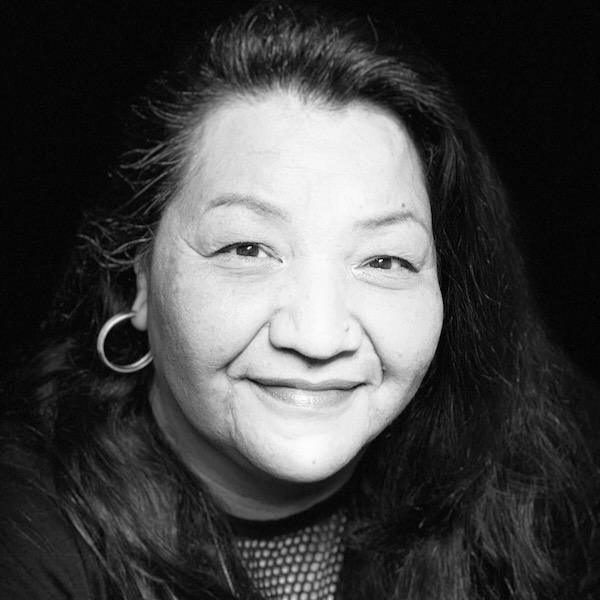Author Shecota Rae Nalwood Nez explores the history and future of the Santa Cruz River in a changing climate.


Author Shecota Rae Nalwood Nez explores the history and future of the Santa Cruz River in a changing climate.
On this page, you will find stories by our team of Climate Reporters — talented Indigenous writers from across the U.S. who pair stories from their communities with scientific data to explore climate change impacts and adaptation actions on the lands and communities in which they live.
Through multimedia journalism, poetry, fiction writing, video, audio storytelling, and photography, Climate Reporters work to express the impacts of climate change on Native peoples and landscapes, highlight resilience actions, and help us understand the value of what is being lost in this rapidly warming world.
The Tohono O’odham Himdag (way of living in the world) has guided our actions since time immemorial. It also holds valuable lessons for the future. By Mary C. Wilson.
A poem by Andra Hawk-Valdez walks us through the cycle of the seasons as storms build, fires burn, winds clear the air, and all is renewed.
Poet Andra Hawk-Valdez notices the effects of drought on the grasses during an evening walk at the Wind River Reservation in Wyoming.
A poem by Gina McGuire reflects on the presence and negative effects of microplastics in our bodies, food, air, and water.
An interview with Nadine Manuel touches on challenges facing the Hopi Nation during this time of climate change and drought. By Gina McGuire.
A poem by Gina McGuire looks back to ancestral knowledges of groundwater and lifeways to inform the future.
A short story by Gina McGuire explores the intersection of Hawaiian culture with climate and disease ecology.
By Gina McGuire. How Much More? I wonder, will the sea push, the slow crawl inland into freshwater lens…
Piercen Nguyen, member of Enterprise Rancheria, Estom Yumeka Maidu Tribe, has been teaching Native American community members in NV and CA how to protect air quality in their homes during wildfire season.
The Missouri River is the longest river in the United States with a length of 2,636 miles.
Its watershed (more than 525,000 square miles) is the largest in the country and it spans over ten states and two Canadian provinces.
Indigenous peoples have been living on and with these lands since time immemorial.
dá∙bal (dah-ball; big sage), ťá∙gɨm (tdah-goom; pinion pine), and hímu (him-oo; willow) are why Wá∙šiw (Washo) live here. In between the high lush landscape of dáɁaw (Lake Tahoe) and the expanse of arid landscapes within the...

Climate Reporter
Mary Cathleen Wilson, MA, a Tohono O’odham tribal member from Cedagĭ Wahia (Green Well), Sonora, Mexico, and Topowa, AZ, brings a wealth of experience and dedication to promoting climate change literacy. As a former Visiting-Editor, and Tribal Liaison for the USEPA’s Office of Pesticides-Toxics/Tribal News, she has a rich background in political science and American Indian Studies from the University of Arizona, providing her with a deep understanding of the complexities facing Indigenous communities. In her public health roles, she has orchestrated multifaceted interventions to combat cancer and cardiovascular diseases among tribal members with diabetes, fostering holistic wellness within the Tohono O’odham community. Through her extensive work in research and advocacy, Mary has demonstrated an unwavering commitment to empowering tribal communities and safeguarding their cultural heritage. As a Tohono O’odham traditional potter, she believes that climate change advocacy is crucial for protecting and preserving the environments and traditions integral to the identities and livelihoods of Indigenous communities.

Climate Reporter
Gina McGuire is an ʻŌiwi (Native Hawaiian) woman, born and raised on Hawaiʻi Island. She is currently a PhD candidate at the University of Hawaiʻi in Geography & Environment, an eco-cultural researcher on a decision support tool project with the Institute of Pacific Islands Forestry, and a climate reporter with Native Climate at DRI. Her research has focused on coastal spaces and Hawaiian healing practice, lāʻau lapaʻau. She holds an MS in Tropical Conservation Biology & Environmental Science and an MA in Creative Writing. She is excited to bring these two passions together for Native Climate.

Climate Reporter
Andra Hawk-Valdez (Tehila Pi Win-He Loves Her Woman) is Hunkpapa Lakota from the Standing Rock Sioux Tribe and grew up in Wakpala, SD. She lives in Ethete, WY on the Wind River Indian Reservation with her husband Robert and family. She is the mother of five children and grandmother of two grandchildren. Andra is currently pursuing her Master of Education degree in Curriculum and Instruction through Sitting Bull College. She received her Bachelor of General Studies degree from the University of Wyoming in 2021. She is currently a climate reporter for the DRI Native Climate Internship program. She has a passion to become a published writer of stories, short stories, and/or poetry through Indigenous history, culture, and knowledge. Andra lives by the teachings and values her parents instilled in her as a Lakota and being a good relative. She looks forward to learning about writing, bringing Indigenous knowledge forward about our climate, and sharing what she learns through the educational platform.

Climate Reporter
Bio coming soon.

Climate Reporter
Ya’at’eeh, I was given the name, Shecota Rae Nalwood Nez, by my mother, who is from Wide Ruins, AZ. I grew up just outside of Cuk Ṣon (Tucson, AZ), bordering the Shuk Toak District of the Tohono O’odham Nation. As a Diné person growing up in between a border town and the sovereign borders of the Tohono O’odham Nation, all of which consists of their traditional lands, I understand the importance of respecting the land you occupy and appreciating the beautifully complex system that sustains the desert.
I attended Arizona State University, which occupies the land of the Akimel O’odham and Pee Posh communities, and obtained a degree in Human Systems Engineering. For my senior Capstone project, I delved into the field of Indigenous Data Sovereignty (IDSov) by conducting a literature review and interviews with Indigenous researchers. I learned that IDSov is crucial for cultural revitalization and land restoration efforts. For the next ten weeks, I am eager to explore storytelling through visual media, believing that art and science are intertwined. By the end of the internship, I hope to highlight the land I love and the communities that protect it.

Climate Reporter
Robin Smuda is a Wašiw person and a member of the Washoe Tribe of Nevada and California. Currently, they are a reporter intern with Native Climate at DRI and studying Cultural Anthropology at the University of Nevada, Reno. Robin is planning on studying Ethno-Archeology and Indigenous Studies in grad school, with a focus on the transition from pre- and post-contact in the Great Basin.
Native Climate’s team of Climate Reporter interns write news stories about the impacts of climate change on Native American communities in the Southwest and Northern Plains regions of the US. Interns report on stories about climate impacts and adaptations by tribes located in their regions, and gain experience developing multi-media communications for the web and social media. Articles are published on the Native Climate website and shared among project partners. These are paid positions hired through the Desert Research Institute in Reno, Nevada. Climate Reporters work remotely with regularly scheduled check-ins via Zoom, under the direction of the Native Climate communications coordinator. For more information or to apply for a position, please contact [email protected].